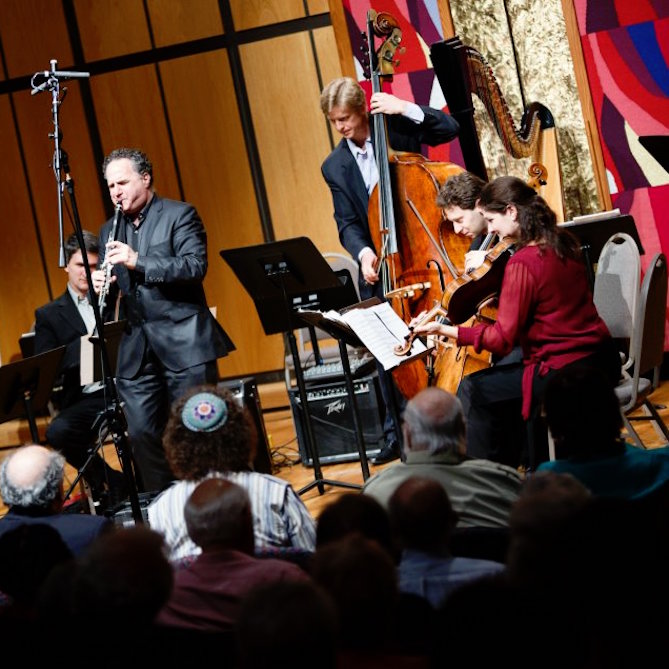
Behind the Scenes of a Music Festival (Part 1): The Vision Thing
Aron Zelkowicz
By self-imposed annual tradition, recent weeks have been crunch time, when a year’s worth of planning comes to fruition. My pet project, the Pittsburgh Jewish Music Festival, held sway in early June where, for the past several years, it has settled in the form of four concerts. I thought it might serve as a useful case study to explore various behind-the-scenes topics.

This is the season when myriad music festivals around the country are in full bloom. What is the take-away experience from any one of these that makes it unique? Even traditional chamber music festivals have their own trademark DNA that set them apart, from big issues (BUDGET, LOCATION) to small (I’m playing in a festival this summer that offers a cookbook featuring the players’ signature recipes—cool!). Festival X offers a mix of Beethoven and Bartok performed by teachers who are in residence for three weeks. Residents and tourists alike attend these concerts as the Festival’s students are seated cozily in the balcony. The venue’s glass panes reveal a mountain view during sunset, lemonade is sold during intermission, local businesses advertise in the program book, and Mozart the Mascot works the reception in his ruffles and wig. That is a vision. Without “the vision thing” it is more difficult to bring people on board.
Sometimes, like a novelist who fleshes out his characters first before figuring out what happens to them, even a festival’s founders slowly realize a vision to its fullest. When I started the Pittsburgh Jewish Music Festival in ’04, the idea was to provide a forum for explicitly Jewish-themed concert works that could hold their own in orchestral or chamber music programs. At this point, “explicitly Jewish-themed concert works” should be a keyboard shortcut on my laptop. After eight years of grant proposals, that mission statement pretty much writes itself! The festival has gone methodically through secular, folk, and liturgical repertoire by contemporary American, Canadian, and Israeli composers, and more recently we’ve explored Russian composers from a century ago. However, as new pieces are unearthed each year, the imperative of that mission is sharpened.
The main focus of our 2011 season was two relatively unknown composers from early twentieth century St. Petersburg: Joel Engel and Solomon Rosowsky. The drive to perform their output came from building programs around their most well-known, audience-friendly pieces: Rosowsky’s “Fantastic Dance” for piano trio, and Engel’s “Dybbuk Suite” for strings, clarinet, and percussion. As if the overarching idea of the festival served as a Petri dish to cultivate an entire repertoire, the composers’ smaller gems helped provide a complete overview of their style and proved worth the risk. An obscure work like Engel’s “Adagio Misterioso” (for violin, cello, harp, and organ), even though we read it through for the first time last February with piano, proved transcendent when we sprung for the (previously described) harmonium (a.k.a. reed organ) that the score called for. Similarly, Rosowsky’s suite of incidental music to the play “Jacob and Rachel” (for piano four hands, flute, and percussion) sounded shapeless and boring during the first reading, yet snapped into place and yielded a great response after careful rehearsals with the entire ensemble. The one vocal work I programmed on complete faith without hearing once until the performance, Rosowsky’s “Lullaby Op. 4 No. 2,” proved to be the most ridiculously neglected treasure of all. This month when audiences, fellow musicians, or cohorts from the newspapers or radio said they “get” what I’m up to, I felt it was an acknowledgement of years of buildup.
When taking on a self-produced project, this kind of support is crucial. In college, the production team is already in place, at your disposal. You are there to get a degree and performing experience, you have paid significant tuition to do so, and talented peers, teachers, administration, concert managers, ushers, janitors, recording engineers, and librarians are there to support you on this journey. Not that we would ever take these resources for granted! But out in the “real world”, these relationships hinge on the service of your unique vision (or, at the very least, your unfailing niceness). This vision may, as in my case, mean repertoire decisions—but it doesn’t have to. In your exposure to music, what institutions are most successful in their succinctness of vision, whatever that may be? Which are best at serving the size of their community, reaching young people, training, education, entertainment, prestige, using multi-media, offering quality above self-promotion? Before I started PJMF eight years ago, Pittsburgh’s stalwart composer David Stock, who knows a thing or two about these things as the founder of the Pittsburgh New Music Ensemble, offered these supportive and nurturing three words over lunch: “It’ll never work!” Indeed, at the time there was no way of knowing what would come. But a strongly opinioned point of view is always a great place to start. Only from that point is it worthwhile to plunge into the hard work and nuts and bolts—which I’ll get into next time.
Subjects: Artistic Vision
